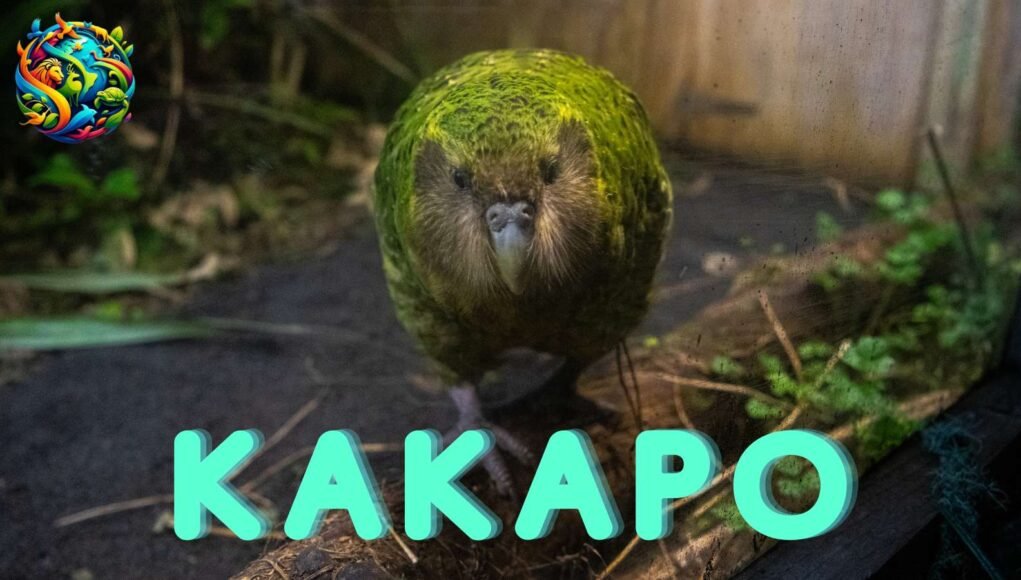Kakapo: The World’s Only Flightless Parrot
Introduction
The kakapo, a unique and enigmatic bird, is one of the most extraordinary creatures on Earth. Native to New Zealand, this flightless parrot has captured the hearts of conservationists and nature enthusiasts worldwide. Known for its quirky behavior, nocturnal habits, and critically endangered status, the kakapo is a symbol of both the fragility and resilience of nature.
Once widespread across New Zealand, the kakapo now faces the brink of extinction due to habitat loss, predation, and human activity. However, thanks to dedicated conservation efforts, this remarkable bird is making a slow but steady comeback. This article explores the fascinating world of the kakapo, delving into its habitat, behavior, challenges, and the inspiring story of its survival.
Amazing Facts
- Flightless Wonder: The only parrot in the world that cannot fly.
- Nocturnal Lifestyle: Active at night, using its keen senses to navigate and forage.
- Boom Calls: Males produce deep, resonant calls to attract females during the breeding season.
- Long Lifespan: Can live up to 90 years, making it one of the longest-living birds.
- Unique Scent: Has a distinctive, musty odor, often described as sweet and earthy.
Habitat and Food
- Native Range: Endemic to New Zealand, now restricted to predator-free offshore islands.
- Preferred Habitat: Dense forests, scrublands, and alpine regions.
- Diet: Herbivorous, feeding on seeds, fruits, leaves, and roots.
- Foraging Behavior: Uses its strong beak and feet to climb trees and extract food.
- Ecological Role: Plays a key role in seed dispersal, contributing to forest regeneration.
Appearance
- Size: Large and stocky, weighing up to 9 pounds, making it the heaviest parrot in the world.
- Feathers: Soft, moss-green plumage with mottled yellow and black markings for camouflage.
- Face: Distinctive owl-like facial disc with whisker-like feathers.
- Beak: Strong and curved, adapted for cracking nuts and seeds.
- Wings: Short and stubby, unsuitable for flight but used for balance and climbing.
Types and Subspecies
The kakapo is a unique species with no recognized subspecies. However, its closest relatives include other New Zealand parrots, such as the kea and kaka.
- Kakapo (Strigops habroptila): The sole representative of its genus, known for its flightlessness and nocturnal habits.
Predators and Threats
The kakapo’s inability to fly and ground-nesting habits make it highly vulnerable to predators:
- Introduced Predators: Rats, cats, and stoats pose the greatest threat to eggs, chicks, and adults.
- Habitat Loss: Deforestation and land conversion have reduced its natural range.
- Disease: Susceptible to avian diseases, which can devastate small populations.
- Low Reproduction Rate: Breeds infrequently, relying on specific environmental conditions.
- Conservation Status: Critically endangered, with fewer than 250 individuals remaining.
Mating and Reproduction
- Lek Mating System: Males gather in a communal area and compete for females using booming calls.
- Breeding Cycle: Occurs only when certain trees, like the rimu, produce abundant fruit.
- Nesting: Females lay 1-4 eggs in ground nests, which they guard fiercely.
- Parental Care: Females raise chicks alone, feeding them for several months until they are independent.
- Chick Survival: Low due to predation and food scarcity, making conservation efforts critical.
Communication
- Boom Calls: Males produce low-frequency calls that can travel up to 3 miles to attract females.
- Skraarking: A loud, harsh call used for territorial disputes or alarm.
- Chirps and Whistles: Used for close-range communication between individuals.
- Body Language: Displays include wing flapping, head bobbing, and feather ruffling.
- Scent Marking: Uses its distinctive odor to mark territory and attract mates.
Movies and Documentaries Featuring the Kakapo
Their unique story has been featured in several films and documentaries:
- “The Unnatural History of the Kakapo” (2009): A documentary exploring its history and conservation.
- “Last Chance to See” (2009): Features Stephen Fry and Mark Carwardine’s journey to find the kakapo.
- “Kakapo: Night Parrot” (2012): A BBC documentary highlighting its behavior and challenges.
These films have helped raise awareness about the kakapo’s plight and the importance of conservation.
Pronunciation in Different Languages
The kakapo’s name is pronounced differently across languages:
- English: KAH-kah-poh
- Māori: Kākāpō (KAH-kah-poh)
- Spanish: (KAH-kah-poh)
- French: (KAH-kah-poh)
- German: (KAH-kah-poh)
The name remains consistent globally, reflecting its unique identity.
FAQs
Q: Why can’t they fly?
A: Its wings are too short and its body too heavy, adaptations that evolved in the absence of natural predators.
Q: What does it eat?
A: It is herbivorous, feeding on seeds, fruits, leaves, and roots.
Q: How many kakapo are left?
A: As of 2023, there are fewer than 250 individuals, making it critically endangered.
Q: What are its main threats?
A: Predation by introduced species, habitat loss, and low reproduction rates.
Q: How does it communicate?
A: Through booming calls, skraarking, and body language.
The kakapo’s story is one of resilience and hope. Despite its challenges, this extraordinary bird continues to inspire efforts to protect and preserve the natural world. Whether you’re a bird lover or simply curious, the kakapo is a testament to the wonders of evolution and the importance of conservation.




